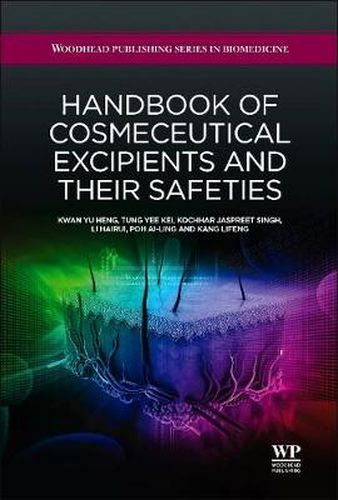Readings Newsletter
Become a Readings Member to make your shopping experience even easier.
Sign in or sign up for free!
You’re not far away from qualifying for FREE standard shipping within Australia
You’ve qualified for FREE standard shipping within Australia
The cart is loading…






Cosmeceuticals are the latest additions to the health industry and have an ever-expanding market. They are considered to be a marriage between cosmetics and drugs and are defined as preparations applied on the body that may modify the physiological functions of the skin. However, as more cosmeceuticals are being launched in the market and more types of drugs are incorporated into the formulation, the composition of cosmeceuticals is becoming more complex. Handbook of Cosmeceutical Excipients and their Safeties summarises the current evidence relating to cosmeceuticals’ side effects and highlights the important information that practitioners and consumers need to know, as well as ways to avoid the adverse effects of the excipients. Handbook of Cosmeceutical Excipients and their Safeties includes chapters covering topics such as the history of cosmeceuticals and the laws that regulate them, skin permeation, carcinogenicity as a systemic adverse effect and dermatitis as a topical adverse effect. It concludes with an appendix that gives brief information on the potency and permeability of common ingredients in cosmeceuticals. The appendix aims to highlight the maximum allowable quantity of each ingredient to ensure product safety for consumers. The appendix was prepared by compiling the ingredients of 257 products containing more than 500 compounds, collected from a hospital pharmacy in Singapore.
$9.00 standard shipping within Australia
FREE standard shipping within Australia for orders over $100.00
Express & International shipping calculated at checkout
Cosmeceuticals are the latest additions to the health industry and have an ever-expanding market. They are considered to be a marriage between cosmetics and drugs and are defined as preparations applied on the body that may modify the physiological functions of the skin. However, as more cosmeceuticals are being launched in the market and more types of drugs are incorporated into the formulation, the composition of cosmeceuticals is becoming more complex. Handbook of Cosmeceutical Excipients and their Safeties summarises the current evidence relating to cosmeceuticals’ side effects and highlights the important information that practitioners and consumers need to know, as well as ways to avoid the adverse effects of the excipients. Handbook of Cosmeceutical Excipients and their Safeties includes chapters covering topics such as the history of cosmeceuticals and the laws that regulate them, skin permeation, carcinogenicity as a systemic adverse effect and dermatitis as a topical adverse effect. It concludes with an appendix that gives brief information on the potency and permeability of common ingredients in cosmeceuticals. The appendix aims to highlight the maximum allowable quantity of each ingredient to ensure product safety for consumers. The appendix was prepared by compiling the ingredients of 257 products containing more than 500 compounds, collected from a hospital pharmacy in Singapore.